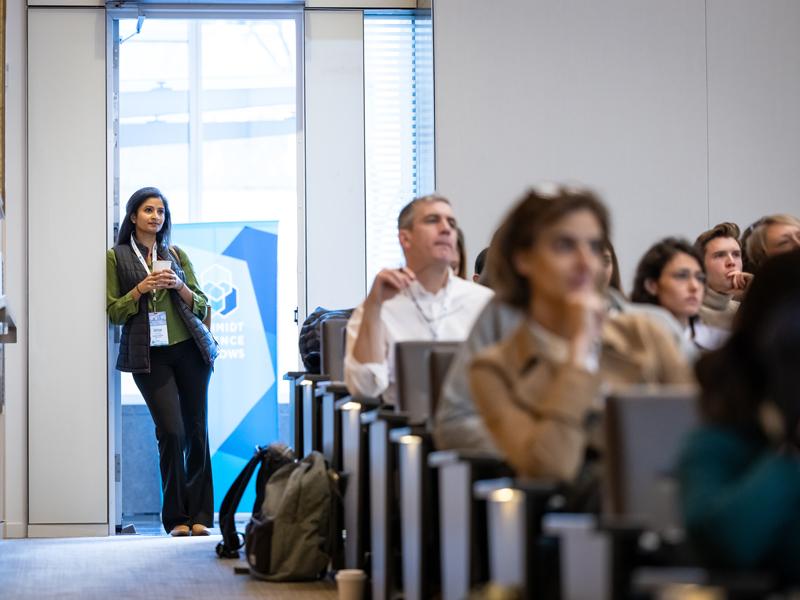Science is facing a new reality in which the world’s most difficult problems can only be solved by interdisciplinary research, and this requires a change in how research is taught and conducted. Shriya Srinivasan, assistant professor of bioengineering at Harvard John A. Paulson School of Engineering and Applied Sciences, can testify to the scientific advantages of crossdisciplinary collaboration – but also the challenges facing early career scientists. She argues that if we want more interdisciplinary science, we need systemic change.
“In a lot of ways, the education system needs to change,” Srinivasan says. “At a very early stage, there need to be workshops, courses – curricula that promote crossdisciplinary training. The next layer is governmental policy, regulatory and incentive structures, and the development of facilities that enable interdisciplinary individuals to have career paths that are non-linear and non-standard.”
Srinivasan’s research interests lie on the frontiers of medicine and engineering, approaching surgical reconstruction – a sub-field of plastic and reconstructive surgery – from an engineering perspective. She is a product of the health sciences and technology programme co-administered by Harvard Medical School and Massachusetts Institute of Technology. While undertaking her PhD, Srinivasan pioneered approaches to restoring touch and feel in prosthetic limbs, and how to translate these groundbreaking procedures into clinical settings.
“I employ a blend of surgical reconstruction and ingestible or implantable bioelectronics to address dysfunctions in motor and sensory control,” she says. “My work is inherently interdisciplinary because I blend fields of engineering and medicine that hadn’t historically intersected. Nowadays, the biomedical engineering field brings these disciplines together to a great degree; however, this is a relatively nascent approach in many parts of the world .”
Third-party institutions can assist in career development. A Schmidt Science Fellowship gave Srinivasan the confidence and support to expand her work into different areas. The lessons she learned designing and commercializing medical devices for global health markets, through the Project Prana Foundation, Srinivasan’s non-profit, have informed education programmes that the foundation now offers to students. These enable young minds to receive exposure to adjacent fields in their undergraduate and graduate years and inspire them to imagine interdisciplinary solutions. This is a first step towards strengthening healthcare innovation in global health contexts. Today’s interdisciplinary scientist needs a wide skillset.
“Primary among them is communication and the ability to manage and engage with the diversity of communication styles and lexicons present between team members that are from different disciplines,” Srinivasan says. “Each field has its own operating language and jargon. That can lead to gaps in understanding or misunderstandings, and so communication is a key skill.”
Managing knowledge gaps is another skill. It is critical for interdisciplinary scientists to learn as much as they can about adjacent disciplines. Srinivasan holds workshops, brainstorming sessions where different research perspectives can be shared, and weekly meetings in her lab with clinicians, engineers and, on occasion, patients and stakeholders from the policymaking sphere.
“In many situations, there are also hierarchical structures in one field that don’t exist in another,” Srinivasan says. “There are ways in which a field works that make it very difficult to bridge, and so learning to navigate all of these demands a multifaceted skillset.”
Difficult to bridge but not impossible, and the rewards for leaning into these challenges are considerable. “The fruits of this sort of work I have seen personally,” Srinivasan says. “And that really motivates me to take the plunge, every time.”
Times Higher Education has partnered with Schmidt Science Fellows to develop a new ranking measuring universities’ contribution to interdisciplinary science. Find out how to participate.
Find out more about Schmidt Science Fellows.


comment